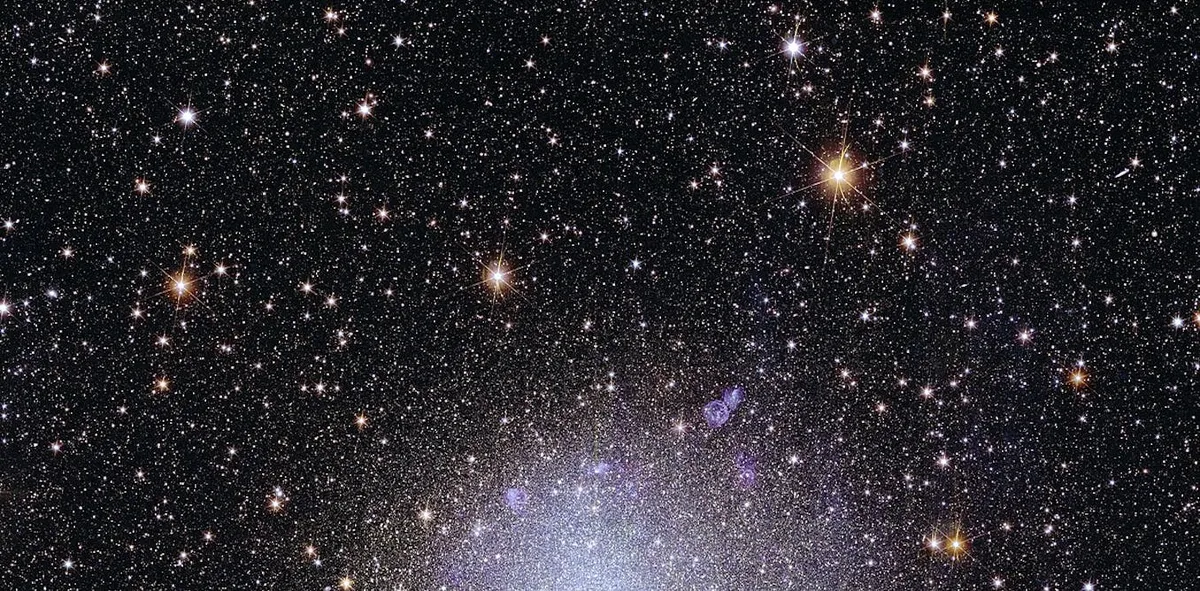
The detection of extraterrestrial life beyond Earth would be regarded as one of the most significant discoveries in the history of science. Our Milky Way galaxy alone is home to hundreds of millions of potentially habitable planets, making the search for life a tantalizing endeavor. Astronomers are harnessing the power of advanced space telescopes to search for molecular indicators of biology within the atmospheres of these Earth-like planets. Despite ongoing efforts, solid evidence of life beyond our planet has yet to be discovered.
In April 2025, a research paper claimed to have detected a potential signature of life in the atmosphere of the exoplanet K2-18b. While this discovery is exciting, it is essential to note that most astronomers, including the authors of the study, are hesitant to definitively assert that it signifies the existence of extraterrestrial life. The search for life beyond Earth is fraught with challenges, and any claim must meet stringent criteria before being accepted as a credible finding.
To reach a consensus on the existence of life beyond Earth, a scientific result must fulfill three critical criteria:
Meaningful Measurement: The experiment must measure a significant and relevant quantity. In the case of K2-18b, researchers utilized the James Webb Space Telescope to observe its atmosphere and identified a spectral feature they attributed to dimethyl sulfide, a molecule associated with life on Earth, particularly in oceans. However, it’s crucial to recognize that this molecule can also form through non-biological processes, meaning it does not provide conclusive evidence of life. Strength of Detection: The detection must be strong enough to minimize the probability that it is a result of random noise. The K2-18b detection reported a significance of 3-sigma, indicating a 0.3% chance of being a false positive. While this may seem low, most scientists consider it a weak detection. The gold standard for scientific findings is a 5-sigma level, which denotes a chance of less than 0.00006%. For context, physicists at CERN required two years of data to achieve a 5-sigma detection of the Higgs boson, culminating in a Nobel Prize in 2013. Repeatability: Results need to be repeatable and ideally corroborated by other researchers or confirmed using different instruments. For K2-18b, this would involve detecting additional biological indicators, such as oxygen in the planet's atmosphere. Without more robust data, skepticism prevails among researchers regarding the claim of life on K2-18b.Throughout history, claims of life on Mars have often captured public imagination. Over a century ago, Percival Lowell, a retired Boston merchant-turned-astronomer, asserted that linear features on Mars were artificial canals built by a declining civilization. Although this would have been a groundbreaking discovery, it ultimately failed to meet the criteria of strong evidence and repeatability, as no other astronomers could confirm his findings.
In 1996, NASA held a press conference announcing evidence of biology in the Martian meteorite ALH 84001. The evidence included an image purportedly showing microfossils; however, subsequent analyses provided alternative explanations for the features that did not involve biological processes. More recently, the detection of low levels of methane in the Martian atmosphere has raised questions about potential biological origins, but conflicting results from various spacecraft have left scientists cautious about making definitive claims.
While the detection of microbial life would be extraordinary, discovering advanced extraterrestrial civilizations would be a remarkable milestone in human history. The Search for Extraterrestrial Intelligence (SETI) has been ongoing for over 75 years, yet no messages have been received. In 1977, a radio telescope in Ohio captured a brief and unusual signal, famously dubbed the Wow! Signal. Unfortunately, this signal has not been repeated, thus failing the repeatability test.
Additionally, in 2017, the interstellar object 'Oumuamua sparked debates about its origins, with some speculating it could be an alien artifact. However, as it has since exited the solar system, astronomers have been unable to observe it again, and evidence suggests it may simply be a comet. Despite widespread speculation, no discoveries have yet met the stringent criteria established by Carl Sagan.
The same rigorous criteria apply to broader cosmological research. A notable instance involved a claim in 2014 regarding evidence for the inflationary period of the universe, which was later retracted due to a misidentification of dust in our galaxy. Conversely, the independent corroboration of the universe's accelerating expansion has been a success story for the scientific method. In 1929, Edwin Hubble discovered the universe's expansion, and by 1998, two separate research groups utilized supernovae to confirm that this expansion is accelerating. Their findings, which were later awarded a Nobel Prize in 2011, demonstrate the importance of collaboration and repeatability in scientific discovery.
In conclusion, while the search for extraterrestrial life is a captivating pursuit, it is essential to maintain a high standard of evidence before accepting such extraordinary claims. As scientists continue to explore the cosmos, the quest for definitive proof of life beyond Earth remains an exciting yet challenging endeavor.